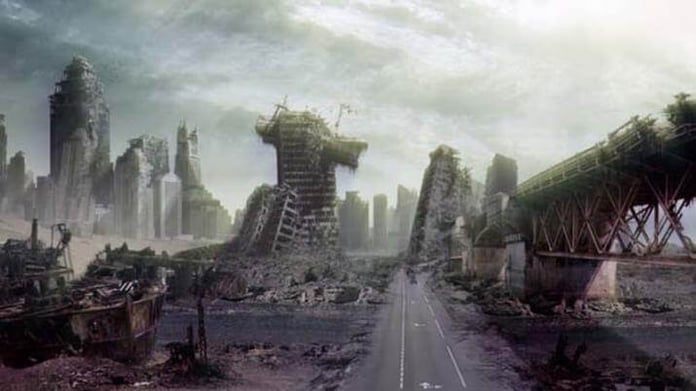Due to threats such as climate change or the current coronavirus pandemic, more and more people are warning that our existence is in danger.
But what would happen if human beings someday ceased to exist?
It is very likely that the end of the human race does not mean the end of the world … the Earth existed billions of years before we appeared and surely will continue to exist much longer without us.
What’s more, environmentalists argue that without the presence of the biggest predators (us), Earth is very likely to prosper like never before.
But what would a world without humans be like? What other species would become dominant? This was what a listener of the BBC program “The Curious Cases of Rutherford and Fry” asked, which is dedicated to answering scientific questions sent by the audience.
To find the answer to this hypothetical scenario, scientists Hannah Fry and Adam Rutherford, presenters of the program, consulted with zoologist (or animal biologist) Matthew Cobb.
According to Cobb, there are different ways of defining what constitutes a “dominant” species.
One may be which is the most numerous. In this sense, Cobb points to insects, which today are by far the largest form of life.
Microscopic champions
However, expert Kate Jones argues that if we are going to measure dominance in terms of numbers, then the real winners are much, much smaller organisms.
“I think the dominant species has been, continues to be, and will probably always be the microbe,” he said.
According to Jones, it is not only due to their number and biomass, but because they live in all kinds of habitats on Earth, from Antarctica and the Arctic to vents at the bottom of the sea.
They also exist long before us: they appeared about 3.5 billion years ago (we only about 6 million years ago)
And it could even be said that they already dominate us, since in our bodies there are more bacteria and other microbes than human cells!
The conquerors
But if we speak of dominance in terms of which species has conquered or destroyed others, or their habitats, there is no doubt that humans have so far earned the dubious title of “number one.”
“Basically wherever we go we get rid of the bigger animals – starting with the mammoth and the woolly rhino – and as we move around the planet, where we go they disappear,” says Cobb.
“With the disappearance of these animals, their role in the ecosystem was also lost, so our arrival transformed the ecosystem of the entire planet,” he explains.
The human species has been so successful in this destructive conquest that many scientists believe that we are on the way to the Sixth Great Extinction (there were five before, the last one eliminated dinosaurs and 3/4 of all life on Earth 66 million years ago. years).
If this happened, which species could survive?
The answer could be found by analyzing what happened in previous extinctions.
“If you look through history, extinction follows a pattern, it is not random. Some species are more prone to extinction than others, and some traits make you more precarious,” explains Rutherford, who is a geneticist.
Astronomer Phil Plait, known as “The Bad Astronomer” because he’s busting myths about space, says that one thing past extinctions had in common is that they all produced a profound change in the planet’s environment.
“There was a sudden climate change, sudden environmental changes, changes in soil chemistry, changes in water and air temperatures, and that’s probably what caused these extinctions.”
But just as the last extinction wiped out the land dinosaurs, eventually giving rise to the emergence and dominance of man, what another way of life could replace us if we are annihilated?
“I think it will be a species that can adapt to the new conditions,” says Kate Jones. “For example, something that can eat plastic.”
However, beyond speculation, Rutherford points out that evolution is a very difficult thing to predict.
“We know there would be things with eyes, things with wings. There would be carnivores, herbivores, maybe plastic-Voros. But beyond that, I would not want to make specific predictions,” he says.
Who did dare to do them was the Scottish geologist Dougal Dixon, who in 1981 published the book “After man: a zoology of the future”, where he not only tells how the dominant species of the future would be but also shows them through various illustrations.
Following the basic principles of natural selection, Dixon predicted that some 50 million years after we humans have disappeared, the world will be dominated by five-foot bats and giant rodents.
Science or science fiction? Well, the truth is that we will not be here to find out.


